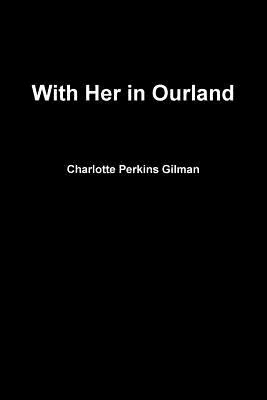6.8 /10 1 Votes6.8
Language English Originally published 1916 Country United States of America | 3.4/5 Goodreads Pages 200 pp. (book) ISBN 0313276145 | |||||||||||||||||||||||||||||||||
 | ||||||||||||||||||||||||||||||||||
Publication date 1916 (serial)1997 (book) Genre Utopian and dystopian fiction Similar Charlotte Perkins Gilman books, Utopian and dystopian fiction books, Feminism books | ||||||||||||||||||||||||||||||||||
With her in ourland by charlotte perkins gilman book reading british english female voice
With Her in Ourland: Sequel to Herland is a feminist novel written by Charlotte Perkins Gilman, and originally published in 1916 in Gilman's self-authored and edited periodical The Forerunner. As its subtitle indicates, the book is the sequel to Perkins Gilman's Herland, published in the previous year, 1915.
Contents
- With her in ourland by charlotte perkins gilman book reading british english female voice
- Publication
- Genre
- Sociology
- Synopsis
- Race and religion
- References
Publication
The twelve chapters of With Her in Ourland were published serially in the twelve monthly issues of The Forerunner in 1916; the novel concluded in the final issue of Gilman's periodical, which ceased publication in December 1916.
Both Herland and Ourland lapsed into obscurity during the middle decades of the twentieth century; but both books have benefitted from increased critical and scholarly attention after republication — Herland in 1979 and Ourland in 1997.
Genre
Both Herland and Ourland belong to the genre of utopian and dystopian fiction, and participated in the major wave of utopian literature that characterized the later nineteenth and early twentieth centuries. (Ourland is the third volume in a trilogy of major utopian works by Gilman, which began with her Moving the Mountain in 1911.)
The utopian aspect is stronger in Herland, while its sequel draws a contrast between Gilman's idealized vision of a feminist society and the darker realities of real, outside, male-dominated world. Together, the two works comprise a "composite utopia."
Sociology
The 1997 reprint of With Her in Ourland is unusual in its emphasis on the novel's sociological aspects. Editor Mary Jo Deegan, a professor of sociology, notes in her Introduction that while most contemporary attention to Gilman's work comes from literary criticism and feminist studies, Gilman was a sociologist, recognized as such by her contemporaries, and that Ourland benefits from a reading as a work of sociology.
Synopsis
With Her in Ourland begins where its predecessor Herland ends: Vandyck Jennings, his newlywed Herlandian wife Ellador, and the exiled Terry Nicholson proceed by airplane and motor launch away from Herland and back to the outside world. (Ourland is narrated by the Jennings character.) At an unnamed Eastern seaport, the three board a ship for the United States. Their craft is battered by a storm, however; the three travelers take alternative passage on a Swedish ship that is heading to Europe. This detour brings Van and Ellador into contact with World War I, then raging; and Ellador is devastated by the carnage and horrors of the conflict.
This new dark knowledge inaugurates Ellador's education in the nature of the male-dominated world beyond Herland. Van praises the quality of her intellect — though he regularly finds himself discomfitted as Ellador's penetrating mind examines the logical lapses and the moral and ethical failures of human society. Ellador pursues a detailed understanding of the world, interviewing and studying with historians and other experts (while keeping the existence of her own society secret). Van and Ellador take a long journey on their way to Van's home in the United States; they travel through the Mediterranean to Egypt, and then eastward through Persia and India, China and Japan. On the way, Ellador examines the differing customs of the cultures they visit.
By the middle of the book, Van and Ellador arrive in San Francisco, and Ellador begins her study of American conditions. Van is forced to confront and recognize many of the inadequacies and contradictions of American culture through Ellador's patient, objective, relentless scrutiny; in the process, Gilman can advocate her own feminist program of social reform. Van has to confront the fact that Ellador's view of America rattles his previously "unshaken inner conviction of our superiority."
The novel concludes with the return of Ellador and Van to Herland; they settle there, and in time Ellador gives birth to a son.
Race and religion
Modern critics have found unsavory elements in Gilman's works: preoccupations with eugenics and euthanasia, plus "racism and nativism," class biases and other prejudices. Some portions of With Her in Ourland, especially the tenth installment, bear upon this subject matter. In the novel's tenth chapter, Ellador confronts a sociologist from the American South, and examines and exposes the illogical racist assumptions of his positions. In the context of her own era, Gilman was to a significant degree anti-racist.
The same chapter in Ourland also considers the status of Jews, what was then called the "Jewish problem." Gilman advocates intermarriage and assimilation of the Jews into the modern societies in which they lived — another position that was more liberal then than it is now.
